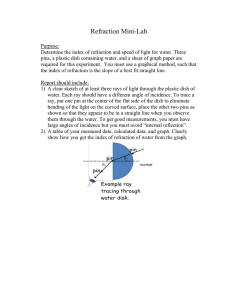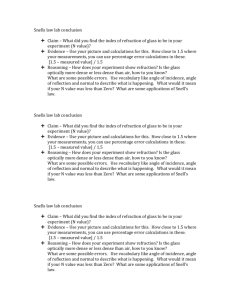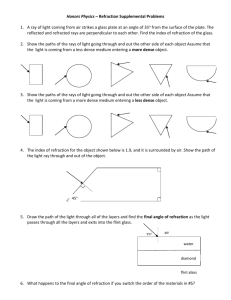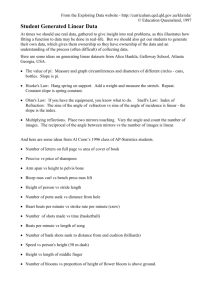Ch18.1
advertisement
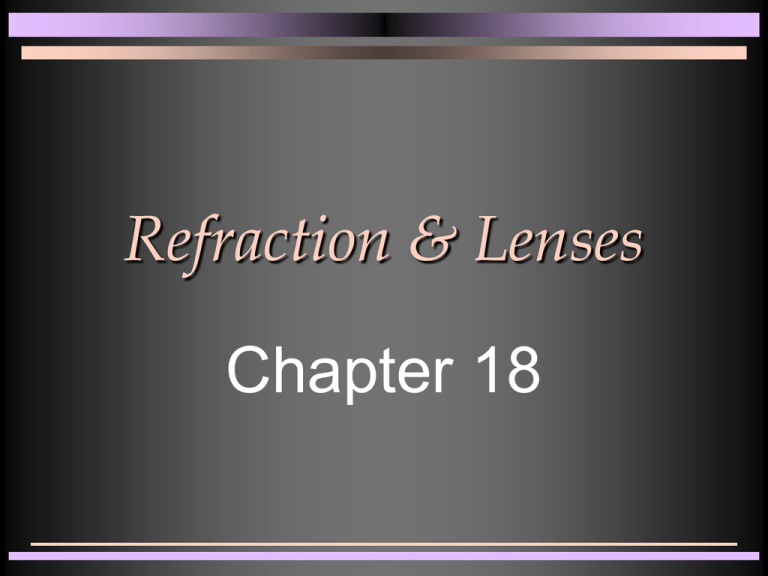
Refraction & Lenses Chapter 18 Refraction of Light Look at the surface of a swimming pool Objects look distorted Light bends as it goes from one medium into another\ Why? When a medium causes a wave to slow down it is more optically dense Entering more optically dense Waves moving into a more optically dense medium will cause the wave speed to slow down and then bend toward the normal Therefore, the angle of refraction is smaller than the angle of incidence Entering less optically dense Waves moving into a less optically dense medium will cause the wave speed to increase and then bend away from the normal Therefore, the angle of refraction is larger than the angle of incidence Snell’s Law Dutch Scientist Willebrord Snell discovered that a ray of light bends in such a way that the ratio of the sine of the angle of incidence to the sine of the angle of refraction is a constant, index of refraction (n) ni sin i nr sinr ni index of refraction for the incident medium i angle of incidence nr index of refraction for the refracting medium r angle of refraction Index of refraction ratio of speed of light in a vacuum, c, to another medium, v n=c/v index of refraction in a vacuum is 1.00 table on page 486 Problem Solving Strategy Draw a diagram showing the two media. Label them, indicating the two indices of refraction, ni and nr Draw a normal to the surface Use Snell’s law to calculate the angle of refraction Total Internal Reflection If ray travels from a more optically dense into a less optically dense medium the angle of refraction is larger than the angle of incidence Eventually the incidence angle is so great that all the light reflects back into the medium No refraction takes place Critical Angle The incident angle that causes the refracted ray to lie right along the boundary of the substance Unique to each substance Critical Angle air critical ray water c Calculate the critical angle Total Internal Reflection When light enters a thin glass rod light is internally reflected (fiber optics) Telephone, computer and video signals Explore the human body Plants use internal reflection Effects of Refraction Mirages Summertime - the sun hits to road and causes the air above the road to heat up The index of refraction for warm air is 1.00026 The index of refraction for cool air is 1.00028 This small change in index of refraction causes the rays to bend This bending makes the road look like there is a puddle on it Because light travels slightly slower in Earth’s atmosphere than in outer space the sun rays bend causing the sun to reach us before the sun is actually above the horizon Same in the evening, the rays bend and reach us after the sun has actually set Dispersion of Light Light of all wavelengths travels at the same speed in a vacuum Other media causes the speed to slow down The wavelength also determines the speed & index of refraction In most materials red light travels fastest It also has the smallest index of refraction Violet is the slowest and has the largest index of refraction Red is bent the least, violet the most Dispersion The separation of light into a spectrum by refraction Diamond Rainbow (water)



